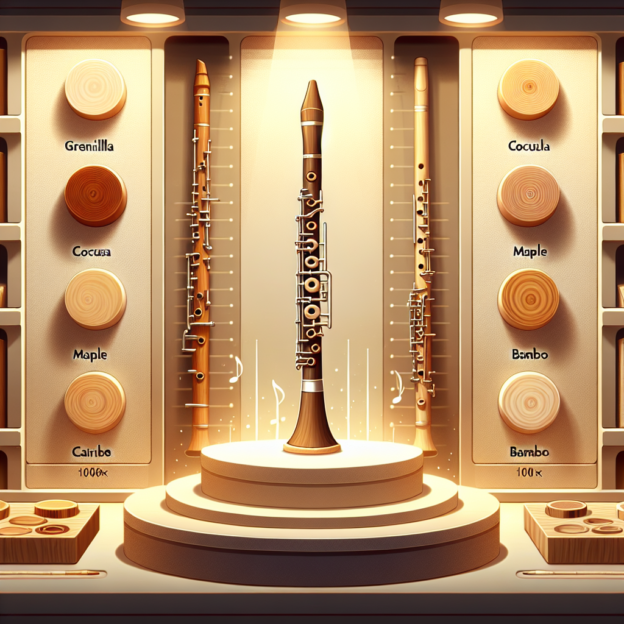When you pick up a clarinet, chances are you don't think about the wood that makes it sing. But, oh boy, let me tell you, the type of wood used in clarinet construction is seriously interesting! Today, we're exploring the historical clarinet wood types, how they affect the instrument's sound, and why they matter to players just like you.
The Golden Child: Grenadilla
First off, let's talk about the star of clarinet woods: grenadilla. This dense, black African hardwood has been the top choice for clarinet makers for centuries. Known for its rich, warm tone, grenadilla offers a balance of brightness and warmth that many players love. One fun fact? Grenadilla is quite heavy, which means it can be a bit of a workout to carry around. But that weight gives it a solid, powerful sound that really fills a room!
The Bright Contender: Cocus Wood
Another wood that's caught the eye of clarinet makers is cocus wood. Cocus was all the rage during the late 18th and early 19th centuries. Unlike grenadilla, cocus is lighter and usually produces a bright, sharp tone that's great for orchestral music. Here's something cool: clarinets made of cocus often have a striking natural grain pattern that can be incredibly beautiful—imagine being the center of attention on stage!
| Wood Type | Weight | Tone | Best Suited For |
|---|---|---|---|
| Grenadilla | Heavy | Rich, warm | Professional players, classical music |
| Cocus | Light | Bright, sharp | Orchestral music |
| Maple | Medium | Bright | Beginners, casual players |
| Bamboo | Very light | Light, airy | Students, early music |
The Accessible Option: Maple
Then we have maple. While not as common for professional instruments, some manufacturers have tried out this easy-to-find wood. Maple can project a bright sound but might not have all the depth that grenadilla offers. For a beginner or a casual player, a maple clarinet could be a great choice, giving you good sound without emptying your wallet.
The Lightweight Contender: Bamboo
In this chat, we can't forget about bamboo. Yes, bamboo! Often linked with more affordable student instruments, bamboo clarinets have their own charm with their unique affordability and lightweight design. Many students find bamboo clarinets enjoyable as they can create a lighter, airy sound that's perfect for early music practice.
The Craftsman's Touch: Martin Freres Clarinets
Now, let's take a moment to appreciate the work put into Martin Freres clarinets, which have made their mark in clarinet history for their dedication to wood quality. Each Martin Freres instrument is carefully crafted using the best woods available, shaping the instrument's sound to match what experienced musicians want. Players often talk about how their Martin Freres clarinet seems to have its own personality, easily fitting into different music styles.
How Wood Affects Your Playing Style
Ever wondered how these differences change your playing style? Let's break it down a bit. If you're into classical pieces, the deep, resonant tones of a grenadilla can give you that rich, full sound that's perfect for orchestra performances. On the other hand, if you're more into jazz or modern styles, cocus wood's lightness might help you play quicker, brighter notes that are great for improvisation. Each wood type reflects the musical style and exploration of the musician, leading to a unique playing experience!
The Importance of Wood Selection
As wood selection changes with the industry, it's important for players to notice how their instrument's material affects their sound. You might find your playing style changing a lot with a new wood type, just like a painter tries out different canvases. No matter what wood you like best, what really counts is how the clarinet helps you express your musical ideas.
In future posts, we'll look closer at how different wood types can be great conversation starters among musicians. Got a clarinet made of grenadilla? You might soon find yourself chatting away about the unique features of your clarinet!
Whether you're just starting out or you've been playing for years, learning about historical clarinet wood types is a fun journey. Go for it! Each wood has its own story, history, and way to make your playing better. So, what are you waiting for? Pick up that clarinet and explore the sounds of history in your own way, bringing the past to life with every note you play!
Table of Contents
- The Golden Child: Grenadilla
- The Bright Contender: Cocus Wood
- The Accessible Option: Maple
- The Lightweight Contender: Bamboo
- The Craftsman's Touch: Martin Freres Clarinets
- How Wood Affects Your Playing Style
- The Importance of Wood Selection
- Table of Contents








